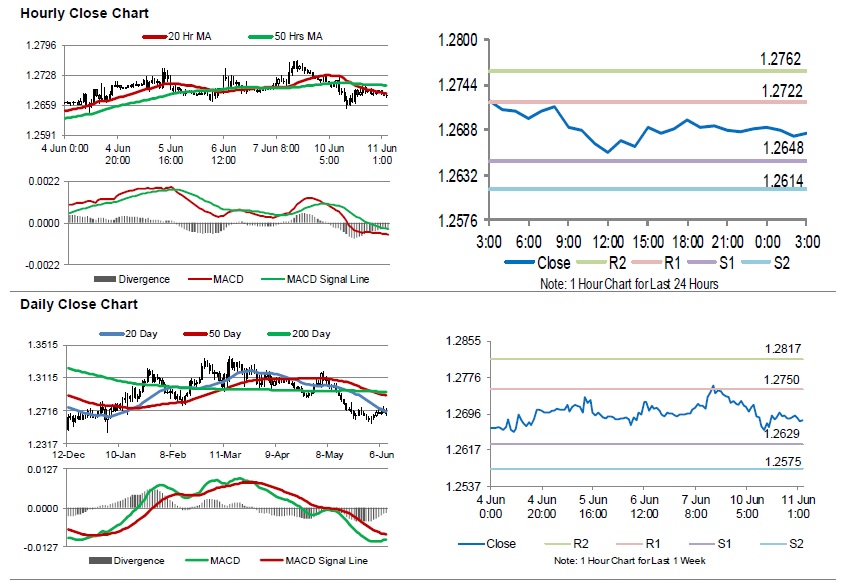For the 24 hours to 23:00 GMT, the GBP declined 0.22% against the USD and closed at 1.2689, after dismal economic data.
On the data front, the nation’s total trade deficit narrowed to £2.74 billion in April, following a revised deficit of £6.15 billion in the previous month. Markets had expected the nation to post a deficit of £4.7 billion.
On the flipside, UK’s gross domestic product (GDP) dropped to its lowest level in 3 years by 0.4% on a monthly basis in April, amid steep decline in factory production and compared to a fall of 0.1% in the previous month. Market participants had envisaged GDP to record a decrease of 0.1%. Further, UK’s manufacturing production unexpectedly declined to a 17-year low level of 0.8% on a yearly basis in April, defying market consensus for a rise of 2.0%. In the prior month, manufacturing production had recorded a rise of 2.6%. Moreover, the nation’s industrial production surprisingly fell 1.0% on an annual basis in April, defying market expectations for an advance of 0.9%. In the previous month, industrial production had registered a rise of 1.3%. Also, the construction output rose 2.4% on a yearly basis in April, less than market expectations for a rise of 3.3% and following a gain of 3.2% in the previous month.
In the Asian session, at GMT0300, the pair is trading at 1.2683, with the GBP trading 0.05% lower against the USD from yesterday’s close.
The pair is expected to find support at 1.2648, and a fall through could take it to the next support level of 1.2614. The pair is expected to find its first resistance at 1.2722, and a rise through could take it to the next resistance level of 1.2762.
Looking ahead, investors would keep an eye on UK’s ILO unemployment rate and average weekly earnings, both for April, slated to release in a few hours.
The currency pair is showing convergence with its 20 Hr moving average and trading below its 50 Hr moving average.

